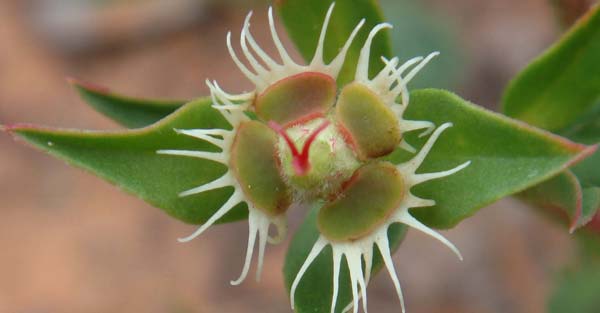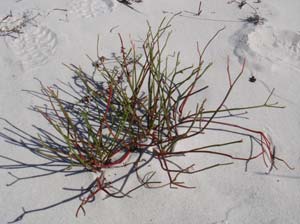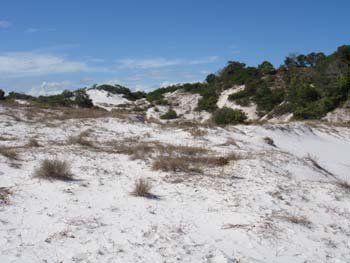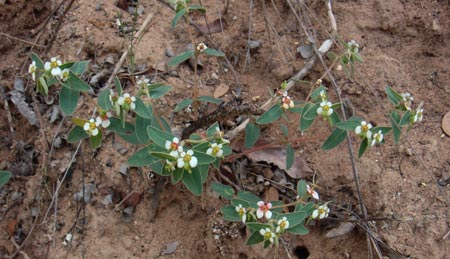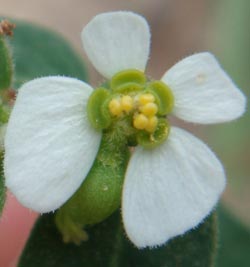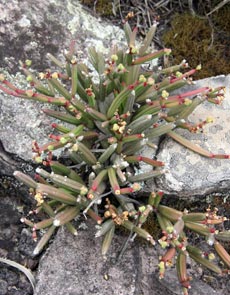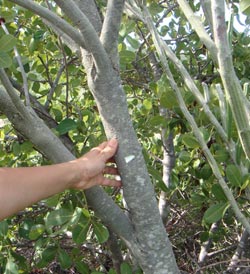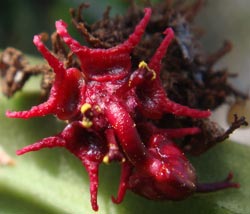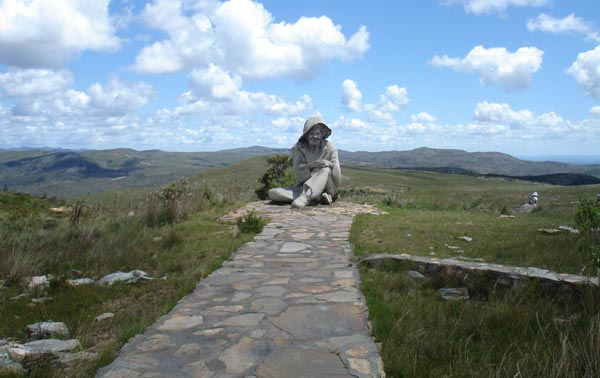
|
Euphorbia - Fieldwork Activities | ||||||||||||||||||||||
Home Project Participants About Euphorbia Fieldwork News Data Portal Interactive Key Links Contact Us | Brazil, Feb 2009 Participants: Ricarda Riina, Maria Beatriz Rossi Caruzo, Daniela Carneiro-Torres, and Inês Cordeiro. Trip account by R. Riina.
Brazil is such a big country that it was difficult to decide which areas to visit for this first Euphorbia collecting trip. There were a couple of species of great interest to us (E. lycioides), only known from the type locality in the state of Piaui, and several interesting Chamaesyce but they were so far apart and far from the main centers of Euphorbia diversity that we decided to leave them for another trip. Instead we concentrated our collecting efforts on areas of high diversity for Euphorbia in the States of Bahia, Sao Paulo, and Minas Gerais. I spent several days in São Paulo working at the herbarium of the Instituto de Botanica de São Paulo (SP) and the herbarium of the Departamento de Botanica of the Universidade de São Paulo (SPF). After that, Beatriz and I went to Salvador (Bahia) where we met with two botanists (Flavio Franca and Ifigênia Melo) from the University of Feira de Santana. In Salvador we collected E. gymnoclada, a deep sand species, which grows on the white dunes surrounding the city. Thanks to Flavio and Ifigênia for accompanying and helping us!
Next day Flavio drove us to Feira de Santana where we met with our collaborator Daniela Carneiro-Torres. We worked in the herbarium for a couple of hours and then Beatriz, Daniela, and I headed to the field to our first destination, Morro de Chapeu. Along the road from Feira to Morro we collected several Croton species (we like Croton as well!), but it was the following day that our Euphorbia collection began. We covered several sandstone outcrops and sandy areas around Morro de Chapeu, and collected several interesting species our first day: E. sessilifolia, E. tamanduana, E. viscoides, E. appariciana, E. goyasensis (=E. sarcodes), E. heterodoxa, and E. phosphorea. Our second day we drove several hours from Morro de Chapeu to the city of Jacobina with the idea of collecting the recently described E. teres. Unfortunately, we hiked the whole afternoon on a very steep slope, the sun was intense and the hike was pretty hard (or we weren't in such a good shape), and we did not find our plant!
After our successful week in Bahia we went back to Sao Paulo where our collaborator Inês Cordeiro was waiting for us to start our collecting trip to the beautiful state of Minas Gerais. Our driver (Luis) drove the whole day until we reached our first spot on top of Serra do Cipó. Next day was all collecting both Croton and Euphorbia. We found E. setosa, a species growing in vegetation of Cerrado. We also found E. sipolisii on rocky outcrops, and at the very end of our journey we found E. elodes and E. peperomioides, two herbaceous species in sect. Portulacastrum. I was expecting to collect E. potentilloides, another Chamaesyce from the Cerrado areas, but we found it later growing in a Cerrado area close to Sao Paulo.
| ||||||||||||||||||||||
|
© PBI Euphorbia Project | |||||||||||||||||||||||
